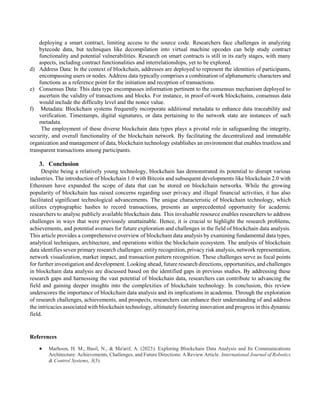Time sign limit Ethereum: Why can’t they replace blockchain
Ethereum’s underlying technology has been declared one of the most innovative and promising blockchain platforms ever planned. The algorithm of consciousness, which requires miners to solve complex mathematical puzzles to confirm transactions and create new blocks, is the main factor that is widespread. However, despite the success of Ethereum, there are concerns that only time stamps can never completely replace the blockchain.
Problem with time stamps
Time stamps, also known as time stamps or time stamps in simple English, refer to the unique digital signatures assigned to each Ethereum network transaction. These signatures verify that the transaction has not been destroyed or changed since its incorporation, providing a non -ambitious record of all transactions made in the blockchain.
While time stamps serve as an essential component of Ethereum Blockchain integrity and authenticity, they have restrictions. For example:
* Time stamps are volatile
: The time needed to generate a new block can be quite large, resulting in delays between the blocks.
* Time stamps cannot independently check the transactions : One time stamp does not guarantee that all transactions in a particular block were made correctly.
* Time stamps lack transparency : Timetamps provide no information on the origin, validity or integrity of certain transactions.
Why time stamps cannot replace blockchain
While time stamps are needed to ensure the reliability and security of the Ethereum Blockchain, they are fundamentally incompatible with decentralized systems such as blockchain. The underlying architecture of blockchain depends on the use of cryptographic methods to create a constant record that is difficult to repeat with time stamps.
* Decentralization : Blockchain is a decentralized system that works independently, making it impossible for one time stamp or authority to control all transactions and check their validity.
* Cryptographic Safety

: The complexity of the provision algorithm is based on cryptographic methods, such as hash functions and digital signatures that are difficult to repeat with time stamps. These advanced computing processes make the use of time stamps as a blockchain substitute.
Blockchain Future: Time stamps or Proof of Behavior?
As Ethereum continues to develop and expand its capabilities, the question remains whether time stamps will still be an essential part of the network architecture. Although it is possible to introduce alternative time stamp -based solutions, they may need significant changes in the existing work -proof algorithm.
* Proof of imposing : This approach includes validators that promote part of their digital assets in the network in exchange for the rate. While promotional evidence has gained popularity in some blockchain ecosystems, it may not be enough as an independent solution.
* Hybrid Solutions : Combining multiple time stamp solutions or introducing new cryptographic techniques could potentially create a hybrid system that balances the needs of both time -oriented and evidence architecture.
Conclusion
While time stamps are an essential part of the Ethereum blockchain architecture, they cannot completely replace it. Timestleps Using Typical Restrictions to check transactions and ensure that network security makes them incompatible with decentralized systems such as blockchain. As we continue to explore alternative solutions and improvements in cryptocurrency technology, the future of Ethereum and other blockchain platforms may be a nuanced understanding of their strengths and weaknesses.
© 2022 – Potenza Building Material